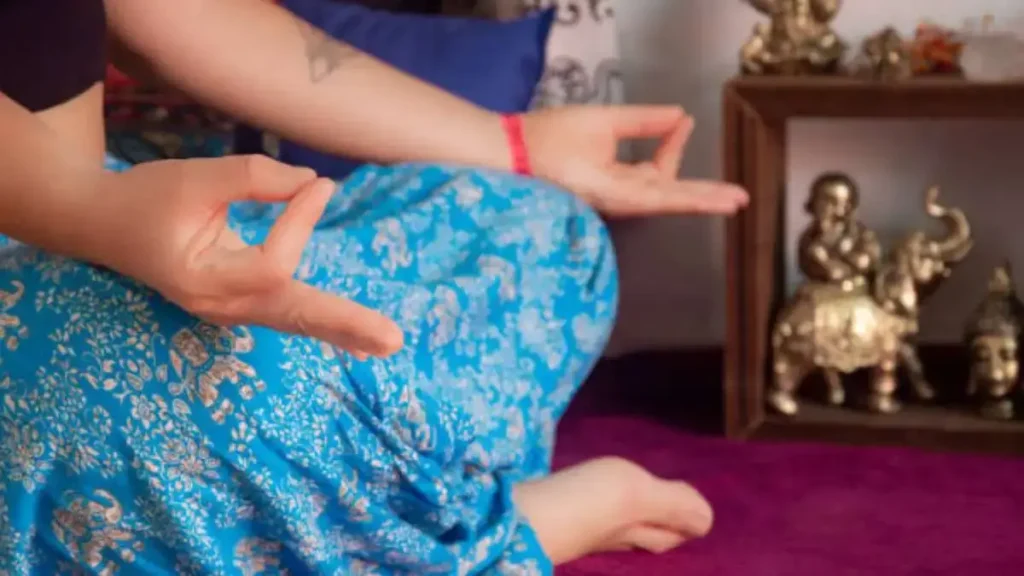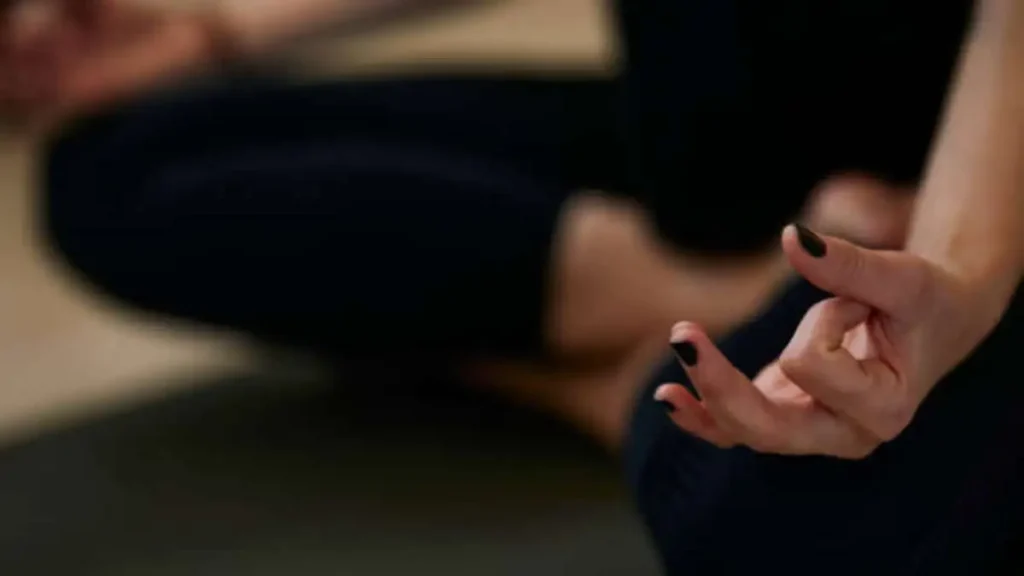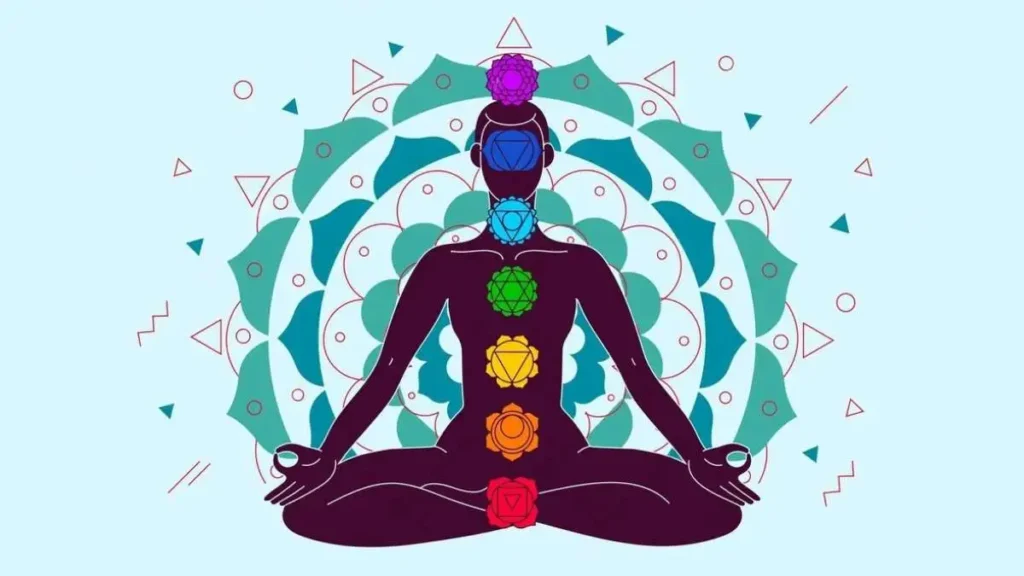YOGA
What is Chin Mudra? Discover Its Meaning and Health Benefits

Chin Mudra or the Sign of Consciousness is a basic mudra that helps in correct mind function and spiritual awakening in yoga and meditation. It involves taking the palm and placing the right thumb on the index finger while the other three fingers should be straight. They represent a combination of the personal psyche with the universal psyche. Chin Mudra is said to have existed for thousands of years. It was practiced in ancient India by yogis and sages, who incorporated it into their meditation practices.
Table of Contents
Breakdown of the Term “Chin Mudra”
The term Chin Mudra is made from two terms in Sanskrit, these are Chit and Mudra Chit refers to consciousness, while mudra translates to gesture or seal. Thus, Chin Mudra translates to the “seal of consciousness.” Such a gesture connects the person with higher states of consciousness and inner harmony, which is why this is specific.
Historical Significance in Yoga and Meditation
Chin Mudra has significantly impacted the history of yoga practice and meditation. Yoga is applied during and after physical postures, and pranayama and meditation are practiced to align and focus energies. It is thought that touching the tips of these two fingers sends positive energy or prana throughout the body to help bring harmony between the mind and the rest of the body. In meditating, it is applied to amplify self-consciousness and obtain a state of harmony. Tibetan and Hindu texts and scriptures like Hatha Yoga Pradipika and the Gheranda Samhita prescribe the usage of mudras, including the Chin Mudra, as important for the spiritual practices of an individual.
Symbolic Representation in Hinduism and Buddhism
In Hinduism and Buddhism, the Chin Mudra embodies one consciousness and the many consciousnesses of the world, embodied by the index and thumb. It represents union and association with the divine in a place beyond the earthly plane. In Buddhism, It is linked with the posture of meditation. It is depicted in statues and pictures of Buddha, relating to the goal of meditation and scriptural references of Buddhism, which is the enlightenment. Buddhism is based on wisdom and method; the mudra sign symbolizes this aspect.


Benefits of Practicing Chin Mudra
Physical Benefits
- Facilitates the flow of prana (life force) throughout the body, promoting overall vitality and health.
- Helps in improving blood circulation, particularly in the hands and fingers.
- Aids in reducing physical tension and stress, promoting relaxation.
- When used in pranayama (breathing exercises), Chin Mudra can help improve lung capacity and respiratory efficiency.
Mental and Emotional Benefits
- Enhances mental focus and concentration, making it easier to achieve a meditative state.
- Promotes a calm and clear mind, reducing anxiety and mental clutter.
- Helps in balancing emotions and reducing negative thoughts, fostering emotional stability.
- Regular practice can significantly reduce stress and anxiety levels, contributing to better mental health.
Spiritual Benefits
- Facilitates the connection between individual and universal consciousness, aiding in spiritual awakening.
- Stimulates and balances the Ajna (Third Eye) and Sahasrara (Crown) chakras, enhancing intuition and spiritual insight.
- Supports deeper meditation practices, helping practitioners achieve heightened awareness and inner peace.
- Promotes spiritual growth and understanding, aligning the practitioner with their higher self and the universe.


How to Practice Chin Mudra
Step-by-Step Instructions
- Find a quiet place and sit comfortably, such as Sukhasana (Easy Pose) or Padmasana (Lotus Pose). Ensure your spine is straight, and your shoulders are relaxed.
- Rest your hands on your knees with palms facing upwards. Gently touch the tip of your thumb to your index finger, forming a circle. The other three fingers should remain extended but relaxed.
- Close your eyes and take deep, slow breaths. Focus on the breath flowing in and out, maintaining the mudra.
- Practice Chin Mudra for at least 10-15 minutes daily. As you become more comfortable, you can extend the duration.
Mistakes to Avoid
- Tense Fingers: Ensure your fingers are relaxed and not rigid. Tension can hinder the flow of energy.
- Slouched Posture: Maintain a straight spine to allow proper energy flow and avoid strain.
- Inconsistent Practice: Regular practice is key to experiencing the benefits of Chin Mudra. Avoid irregular sessions.
Tips for beginners on mastering Chin Mudra in their practice
- Sit comfortably with a straight spine and relaxed shoulders.
- Practice daily for 15 minutes, focusing on deep, slow breathing.
- Setting a timer can help you focus without worrying about the duration.
- Ensure fingers are gently touching without tension.
- Pair with meditation or pranayama for mindfulness and concentration.
- Gradually integrate into yoga routine for seated poses and meditation.
- Consistency enhances well-being and stress reduction.
Chin Mudra and Chakras
Chin Mudra stimulates the body’s energy system and directly impacts certain chakras. It resonates energy in the body, helping the Prana circulate and concentrate. The circuit established when joining the thumb and the index finger is accountable for stabilizing and channeling energy, thus improving one’s mental health. Chin Mudra works mainly for Ajna Chakra and Sahasrara chakra; the center is responsible for insight. Ajna chakra focuses on thinking and helps you be more aware, whereas Sahasrara chakra links you to the world.


Chin Mudra in Different Yoga Styles
Hatha Yoga
In Hatha yoga, Chin Mudra is used during pranayama and other meditative practices. People find it useful in reducing anxiety, focusing, and as a tool for regulating the body’s energy.
Kundalini Yoga
In Kundalini Yoga, Chin Mudra is adopted to practice Kundalini energy, the spiritual energy found at the base of most people. Different exercises and meditations help center the mind and channel energy through the chakras.
Ashtanga Yoga
Ashtanga Yoga, known for its dynamic and physically demanding sequences, incorporates it primarily during seated meditation and at the end of practice. After an intense physical workout, Chin Mudra helps calm the mind, restoring balance and facilitating a smooth transition into meditation or relaxation.
Restorative Yoga
Restorative Yoga, used to maintain and regain health, is practiced to achieve a state of well-being or wellness. It is usually used during restorative postures, where the mudra helps circulate the prana and release tension. This Mudra helps enhance bodily functions to heal and maintain overall well-being while promoting relaxation.
Scientific Perspectives
The physiological and neurological functions of Chin Mudra have been investigated in different scientific studies. Practicing daily can lead to heightened concentration, decreased stress, and increased stability. It can also enhance the heart health by relieving stress and anxiety. It activates the brain’s sensory and motor regions, thus enhancing cognitive and concentration abilities. Rubbing the thumb and index finger can stimulate pressure points, which enhances alertness and relieves tiredness. Chin Mudra also has the effect of balancing the ANS and helps to calm the body and the mind.
Conclusion
Thus, Chin Mudra is one of the strongest Mudras; it has a meaning and an amazing impact on our health. It holds significance and can aid in attaining self-awareness and awareness of the world around us. If this mudra is practiced with awareness, it benefits the body, mind, and spirit overall.
-



 GENERAL3 weeks ago
GENERAL3 weeks agoUncovering the World of кинокрадко: The Dark Side of Film Piracy
-



 GENERAL2 weeks ago
GENERAL2 weeks agoUnveiling the Art of преводсч: How Translators Bridge Language Barriers
-



 GENERAL3 weeks ago
GENERAL3 weeks agoThe Journey of iamnobody89757: From Anonymous User to Internet Sensation
-



 YOGA4 months ago
YOGA4 months ago4 Person Yoga Poses for Beginners


















